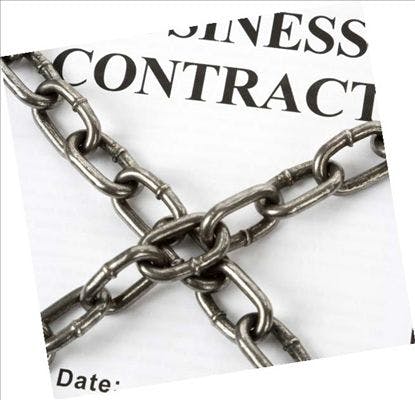
Reduce Lien Exposure With Anti-Assignment Clauses
Property owners, general contractors, subcontractors and materials providers must understand their rights and obligations with respect to construction liens in order to avoid delays in finalizing a project (from the perspective of the property owner) or to avoid forfeiting lien rights (from the perspective of the subcontractor).
Methods of Controlling Liens
The costs associated with dealing with construction liens can be staggering, especially if protracted lien litigation ensues. In the meantime, the title to the property is encumbered. State law provides various ways in which property owners and general contractors can eliminate or reduce the risk that a subcontractor or materials provider can file a valid claim of lien.
Perhaps the best measure to control liens is the filing of a Notice of Commencement by a general contractor or property owner with the clerk of superior court. It provides public notice of the property and project and puts a burden on certain subcontractors to provide their own reciprocal notice before beginning work. If the subcontractor does not provide the required notice, it may be precluded from filing a lien.
A second common lien control measure is a lien waiver, in which a property owner or general contractor requires its subcontractors to execute a waiver with each pay application and draw request. The waiver is a private agreement in which the subcontractor surrenders the right to lien property in exchange for payment.
Another lien control mechanism is a contractor’s affidavit, in which the contractor executes an affidavit at the conclusion of the project stating that it has been fully paid for the work and has paid all of its subcontractors and suppliers. In certain circumstances, the affidavit can bar liens by the subcontractors and suppliers.
Using Anti-Assignment Clauses To Reduce Lien Exposure
An often overlooked mechanism by which property owners and general contractors can further reduce lien exposure is the use of an anti-assignment clause in their subcontracts. An anti-assignment clause is a contractual provision precluding the subcontractor from further delegating or assigning its obligations under the subcontract to other subcontractors.
By including this clause in their subcontracts, property owners and general contractors may eliminate exposure to liens filed by downstream, unknown subcontractors and suppliers. Keep in mind, downstream subcontractors that provided labor or materials in good faith can become frustrated when it turns out they are precluded from filing a lien because of an anti-assignment clause. Accordingly, it is important for all parties to understand their rights with respect to these contractual provisions.
The extent to which an anti-assignment clause will protect property owners and general contractors from exposure is based on state law. For example, some Georgia courts have applied anti-assignment clauses to prevent unknown downstream subcontractors and materialmen from asserting liens against the general contractor and property owner. Under Georgia law, a “subcontractor” for lien purposes is limited to parties in a direct chain of contracts leading to the prime contractor. If the contract between the general contractor and the subcontractor includes an anti-assignment clause, the subcontractor cannot delegate or assign its obligations under the subcontract and any such delegation is outside the chain of contracts.
Consider the following example: A general contractor contracts with subcontractor X to perform curb work in a residential development. The subcontract includes an anti-assignment clause stating that X may not delegate or assign the curb work. Nonetheless, X subcontracts with Y and Y performs the curb work. X never pays Y, so Y files a lien on the underlying property. The property owner would have a good argument in this case that the lien is not valid because of the anti-assignment clause and resulting lack of contractual privity.
It should be noted that there is no clear definition as to what constitutes an “assignment” in any given case. For example, if an unknown third party merely provides materials to an authorized subcontractor and the authorized subcontractor performs the work, the third party may still be able to assert a lien. In this situation, the question is whether the subcontractor truly “assigned” its obligations under the subcontract in violation of an anti-assignment clause.
The extent to which an anti-assignment clause will bar liens by downstream third parties will likely turn on an interpretation of the breadth of the anti-assignment clause and the work performed by the downstream subcontractor or supplier, if any. Accordingly, anti-assignment clauses should be carefully drafted so that it is clear:
- what work a subcontractor may delegate to third parties;
- what work can be delegated only with the general contractor’s knowledge and consent; and
- what work cannot be delegated at all.
From the other perspective, subcontractors and materials suppliers should be careful to review all contracts in the chain to make sure they are authorized to perform work or provide materials. If there is an anti-assignment clause in one or more of the contracts, subcontractors and materials suppliers should obtain verification that the appropriate parties have knowledge of and consent to their work. Otherwise, they may lose their lien rights.
It is important to remember that a party’s rights and obligations with respect to construction liens vary from state to state, and project executives should contact an attorney regarding the application of these principles in any specific case.
Simon H. Bloom and J. Nick Phillips are litigators with the Atlanta law firm Bloom Sugarman. For more information, call (404) 577-7710 or email sbloom@bloomsugarman.com.
Related stories








